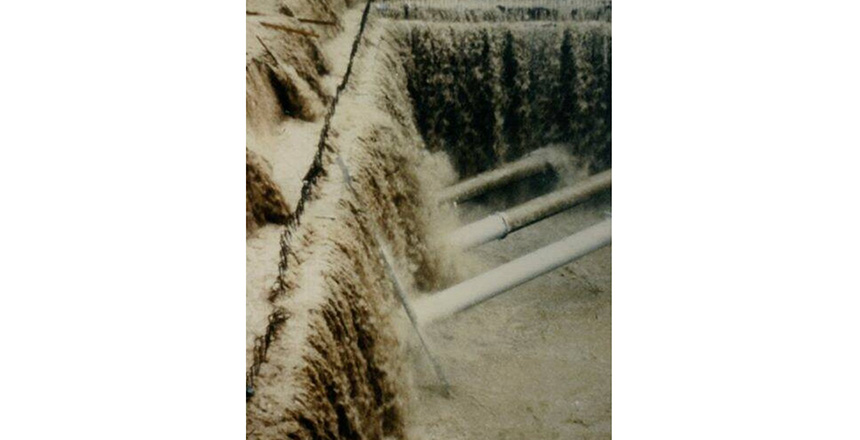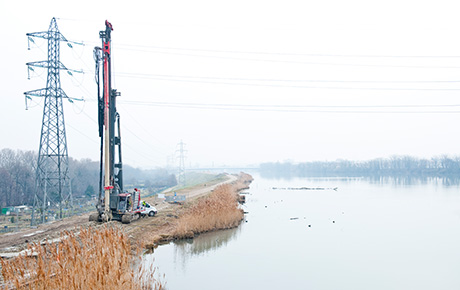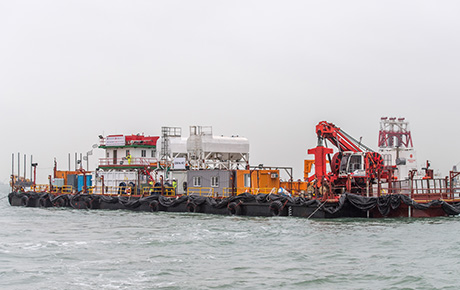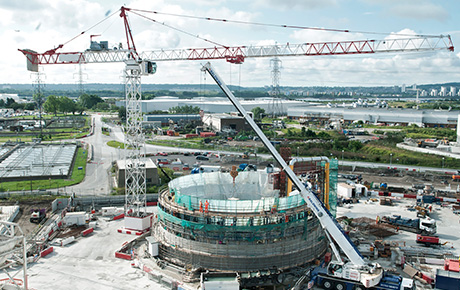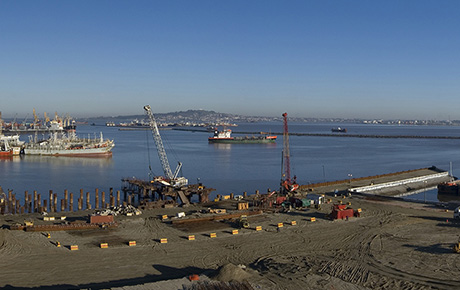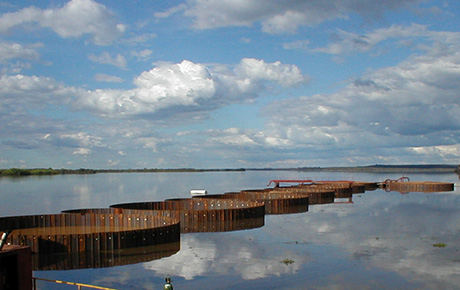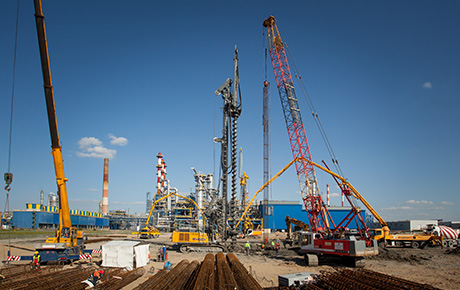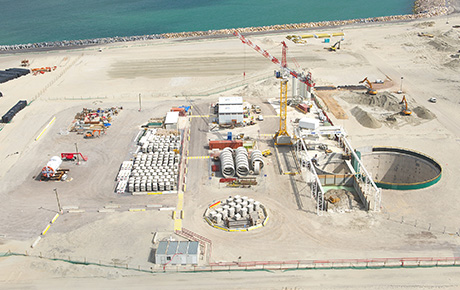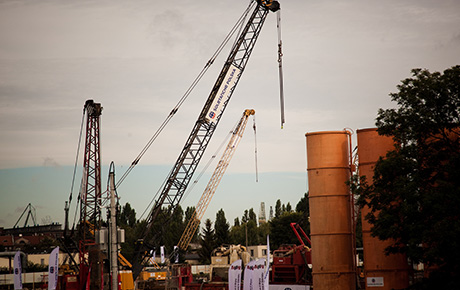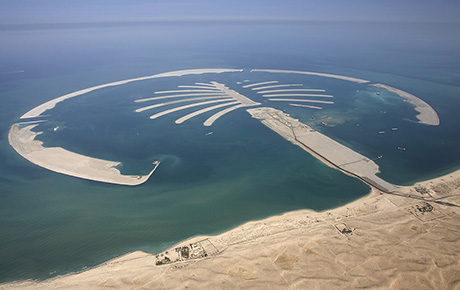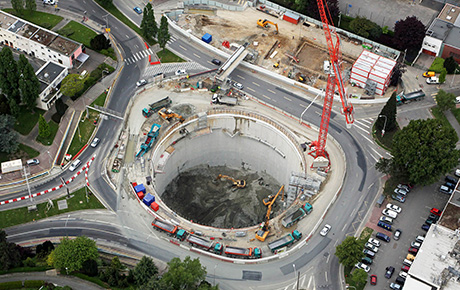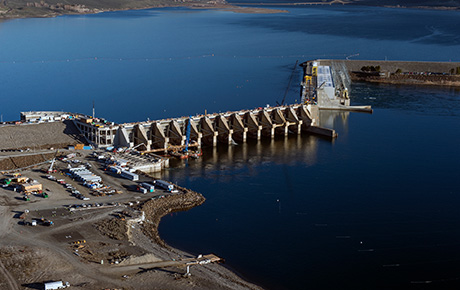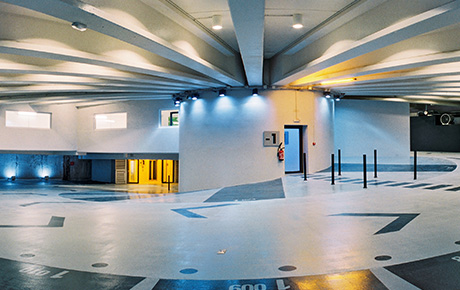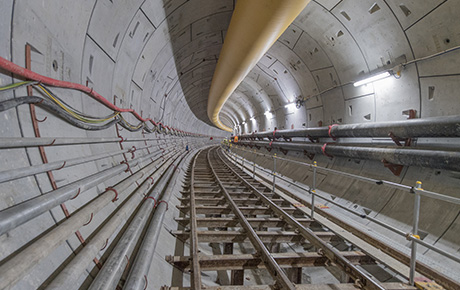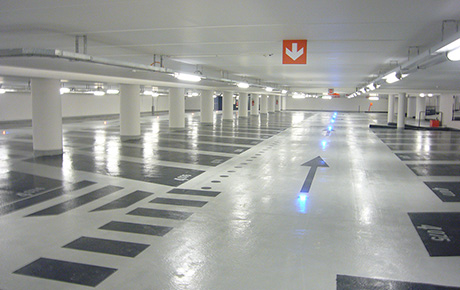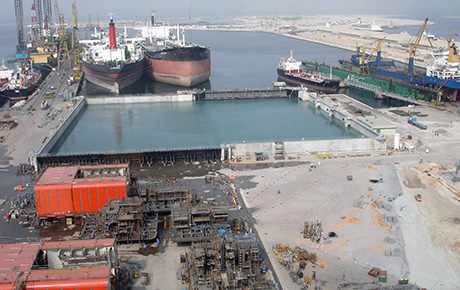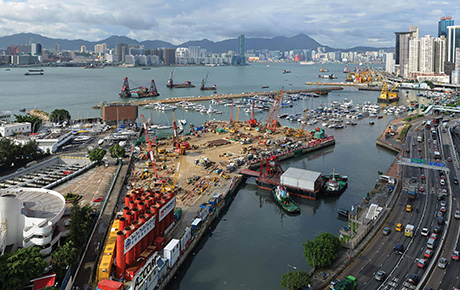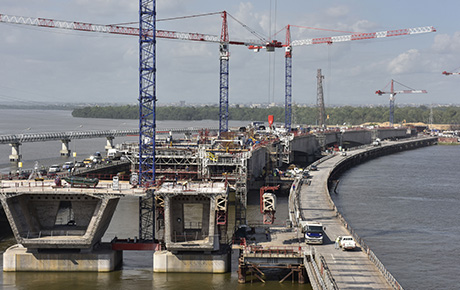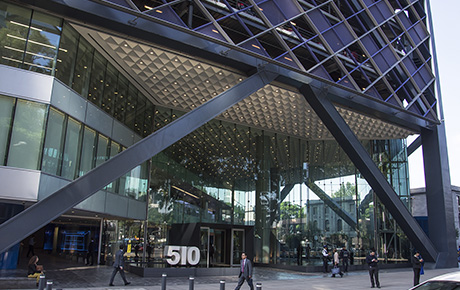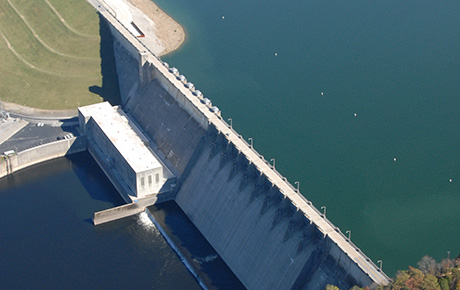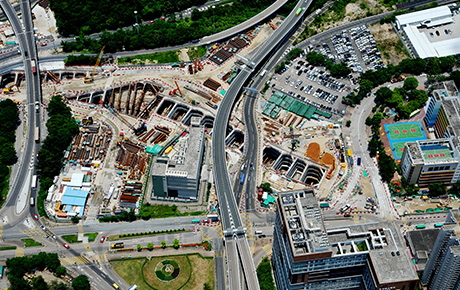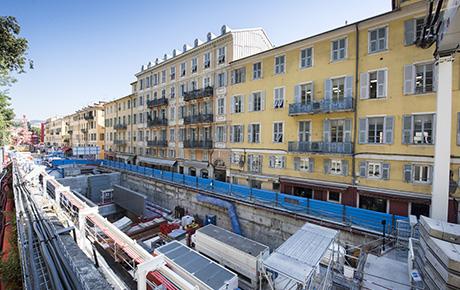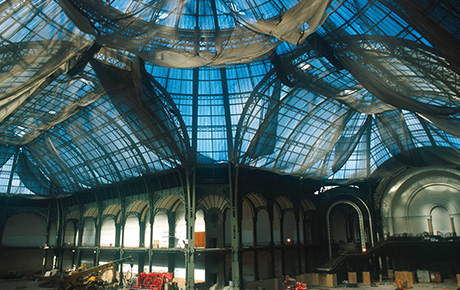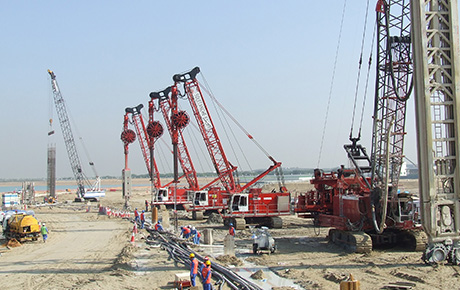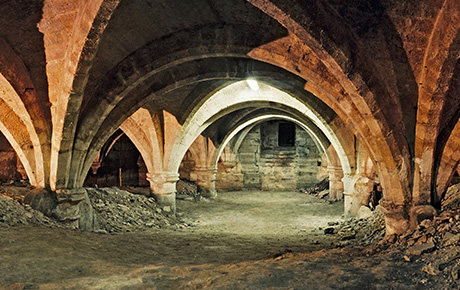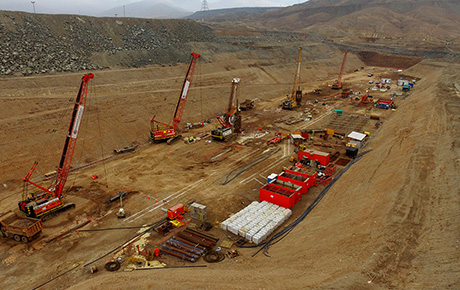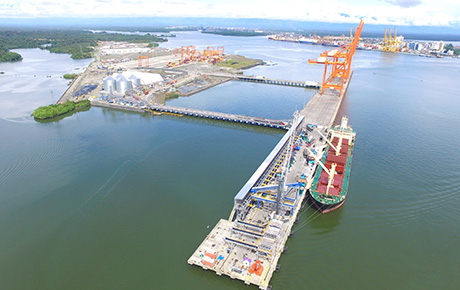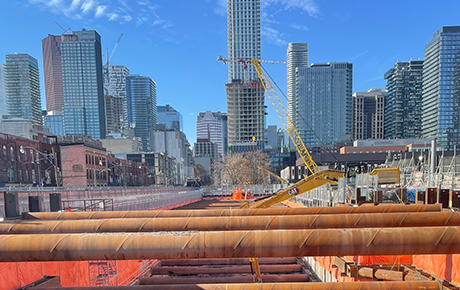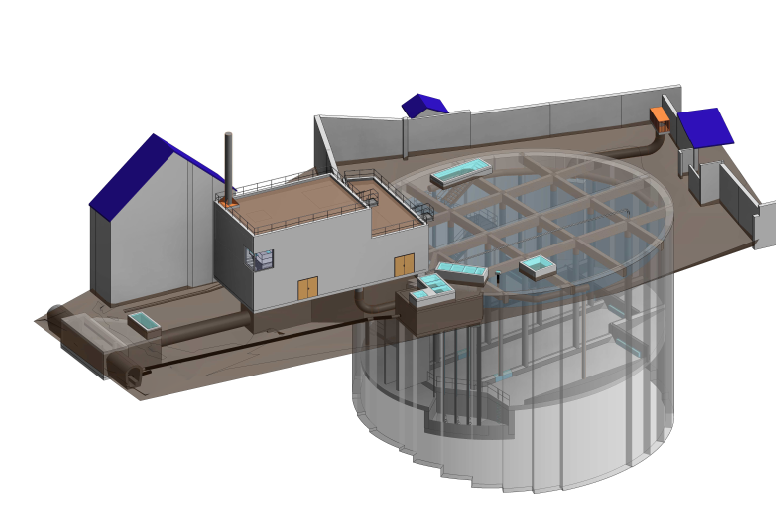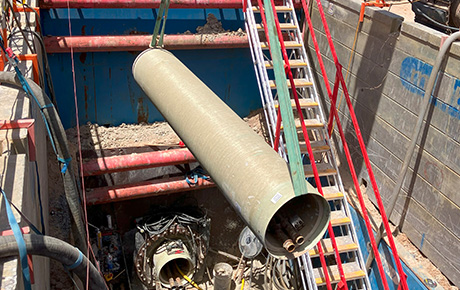Project Description
Supports for all grounds
Soletanche Bachy offers you the benefit of its experience in internal bracing to provide the most optimised solution according to the needs of your project.
What are struts?
Struts are supports, generally made of steel or concrete but sometimes also of timber, which are used to retain the walls of a vertical excavation. They are installed inside the excavation as the earthworks progress and generally support each side of the excavation. They can also be angled and supported at the bottom of the excavation, in which case they are referred to as rakers.
Struts can be used for any type of retaining structure – soldier piles, sheet piles, diaphragm walls, secant piles or Soil Mixing – and for spans of up to around 30m in the usual cases (struts longer than 30 m can be considered for specific cases with suspended struts or stanchions).
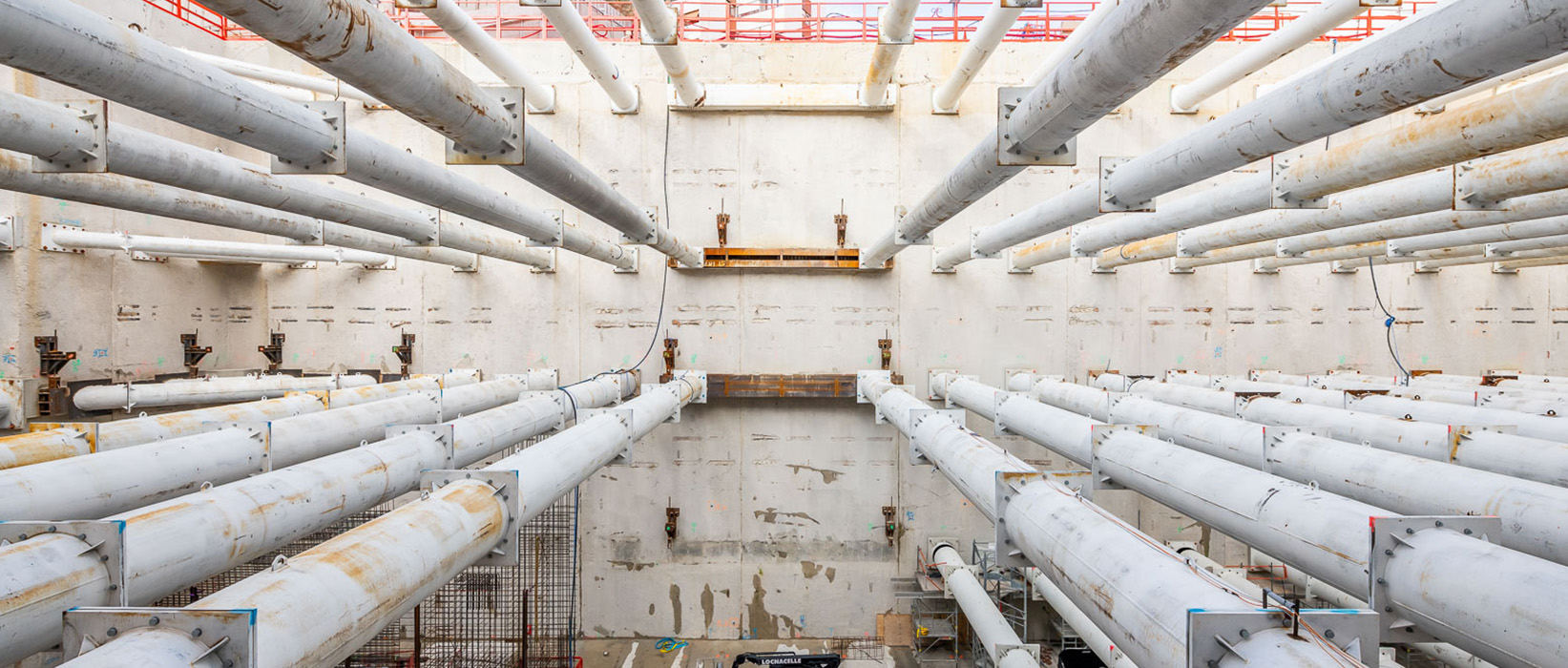
What are the advantages of this technique?
It is an economical solution for excavation in dense and restricted urban areas
Their rigidity reduces movement and so prevents any damage to neighbouring structures
They can be pre-stressed in the event of very demanding movement criteria
They do not need to pass through the wall, eliminating water-tightness problems
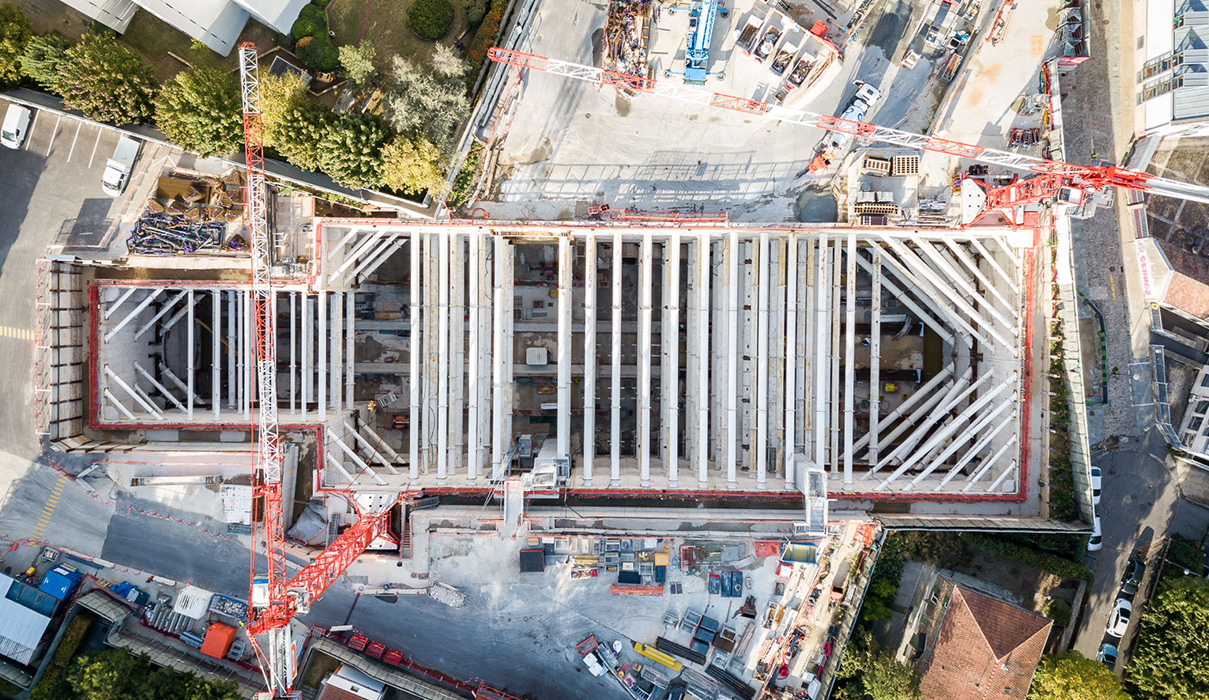

Implementation
The struts are installed as the earthworks progress, generally by a crane outside the excavation. They are connected to the wall to ensure perfect contact and absorption of the thrust transmitted by the wall, before the earthworks then resume.
Struts do not generally come into direct contact with the wall but are placed on a system of steel wales attached to each side of the wall.
Why working with Soletanche Bachy?
Execution controls and monitoring
Displacement and strain gauges can be used to measure the force applied to the struts and correct it, in real time if necessary, using jacks.
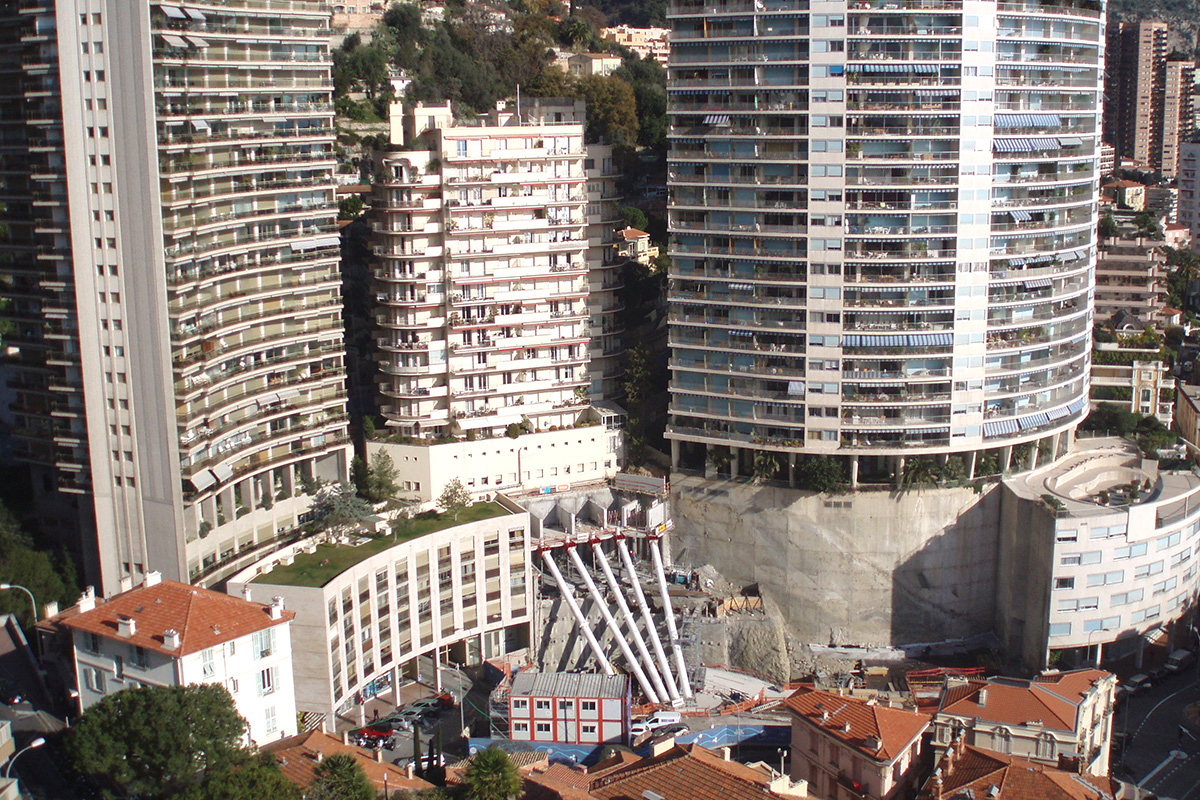
For the Saint-Georges worksite in Monaco, for example, a set of rakers was used to support a wall in a confined site with a steep slope immediately below high-rise buildings.
In view of the sensitivity of the site and the associated risks, a system was designed and implemented by our teams to measure and correct the wall’s movements in real time using jacked rackers.
Did you know?
